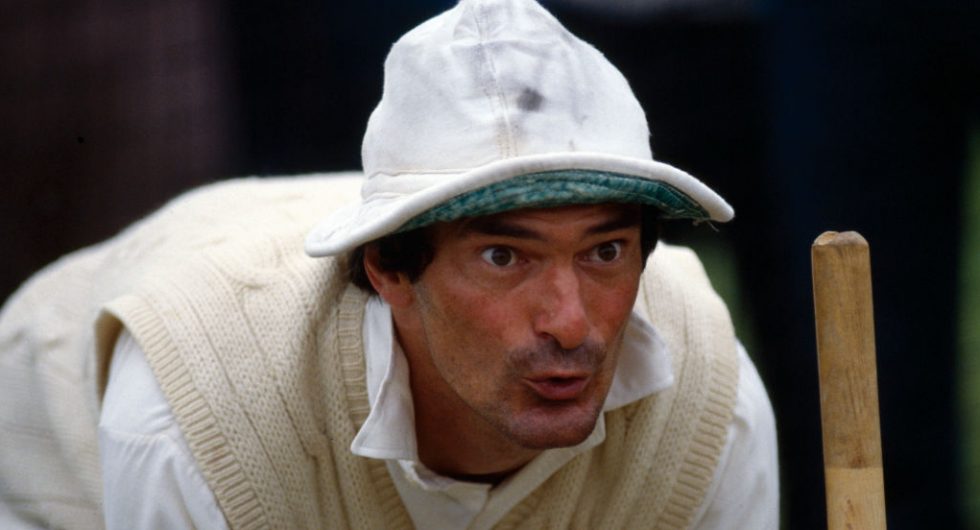Kent and England’s legendary wicketkeeper Alan Knott has revealed that his boyhood aspiration was to grow up and become a fast bowler.

Having been stranded in the county town of Maidstone by the Covid-19 pandemic and unable to fly back to his home in Cyprus, Knott, now 74, gave a rare interview via video-link to his ex-team-mate and club skipper, Chris Cowdrey.
When questioned over his fabled keeping performances, Knott, who won 95 England caps, played over 500 first-class games and took over 2,000 dismissals, conceded that he had joined the county staff as an aspiring strike bowler.
“In my younger years with Kent I kept very little, but of course I was very lucky to have Les Ames at Kent as our manager – probably the greatest batsman/keeper of all time as far as records go.
“I was keen to talk to him, pick his brains and ask him what I should do, and he said: ‘Son, you should concentrate on your bowling!’
“Then, Claude Lewis, our Kent coach back then, said he felt that, as I also opened the batting, I should concentrate my bowling efforts on spin. So, I did, I turned to spin bowling.”
It was then that Knott found himself performing in the nets alongside Derek ‘Deadly’ Underwood, the left-arm spinner with whom he went on to forge a near-telepathic understanding as bowler and keeper. An utterly destructive partnership to visiting batsmen, ‘Knotty and Deadly’ soon joined Kent’s hall of fame and now have a stand named in their honour at Kent’s Spitfire, St Lawrence Ground.
“Derek and I certainly go back a long way.” Added the one-time mercurial gloveman. “I think we were barely 12 when we first met and were still both wanting to be fast bowlers. I suppose back then we might have thought of having Underwood and Knott opening the Kent bowling attack
“We did actually play a Cavaliers game together against Hampshire when we were both picked as spinners. Underwood took two-for and Knott got three-for! One of my wickets was a chap called Danny Livingtone, who went to sweep and got a top edge. The keeper took the catch and there, in the scorebook it read: ‘Livingstone, caught Godfrey Evans bowled Knott’.”
Thankfully, Knott’s mastery behind the stumps eventually prevailed and he went on to join a dynasty of Kent of Kent and England wicketkeepers that started with the grandly-named Edward Ferdinando Sutton Tylecote and which now includes Ames, Evans, William ‘Hopper’ Levett, Geraint Jones and Sam Billings.
In explaining his intuitive understanding of Underwood’s bowling, Knott said: “I was watching him bowl from about the age of 11, seeing him in the nets and batting against him. With that sort of experience, you quickly got used to his thinking and knowing what he was going to bowl.
“Deadly was also very competitive, he used to treat nets like a Test match, and I well remember winding him at practise in Canterbury one day.
“He was just about to run-up and bowl and I shouted out ‘seamer, you’re going to bowl a seamer’. He bowled the delivery then, a few later, I said ‘slower ball’ and he got very annoyed saying ‘you can’t possibly know what I’m going to bowl to you!’”
“We finished the net, but I’d made him think. He said ‘If you can tell what I’m going to bowl, after all these years of playing cricket batsmen around the county circuit will get to know as well. I must do something about it’.
“He then started putting the umpire in the line of his run-up so that batsmen couldn’t see him approaching. He’d then pop out at the last moment from behind the umpire to send down the delivery. Deadly became even more Deadly after that.”
As for his most spectacular dismissal, Knott believes that too came off Underwood’s bowling, a drifting, turning slower ball that found a thick outside edge off Dilip Sardesai’s bat as England took on India at The Oval in 1971. Knott, springing well to his right, took the catch in one glove and almost level with the return crease.
“I remember Sardesai, it was the best catch I caught in my career,” revealed Knott. “I was standing up to Derek and diving away to my right. I remember as a young lad taking one like it during a school game, but to do it at Test level to Derek, who wasn’t the slowest of bowlers although this was off his slower ball, I was delighted.”
Away from his prowess behind the timbers, Knott scored five Test hundreds and 30 half-centuries as an impish middle-to-late order batsman. He also posted 17 tons at first-class level, finishing with a creditable career average of 29.63.
However, Knott believes he played his best innings for England back in 1968, with a match-saving, series-winning backs-to-the-wall unbeaten 73 from 260 balls against the West Indies as he and last man Jeff Jones saved the fifth and final Test in Guyana.
“As far as a series goes it was crucial, we were just trying to play out time and ended up nine wickets down to draw the game,” explained Knott. “That experience for me as a young lad was amazing. Obviously, doing well is nice, but if you do well under pressure and in a vital situation, then that lives with you forever and I’ll always remember that knock.”
Knott will return to these shores sometime later in the year for a deserved visit to Buckingham Palace after being named an MBE in the New Year’s Honours list.
“It was a big surprise,” said Knott. “It’s a long time ago since I finished playing, but it’s very nice for myself, family and friends. I think the award of the medal [scheduled for June] has been put back until safer times. Who knows when it will be now, but I’m truly honoured.”








